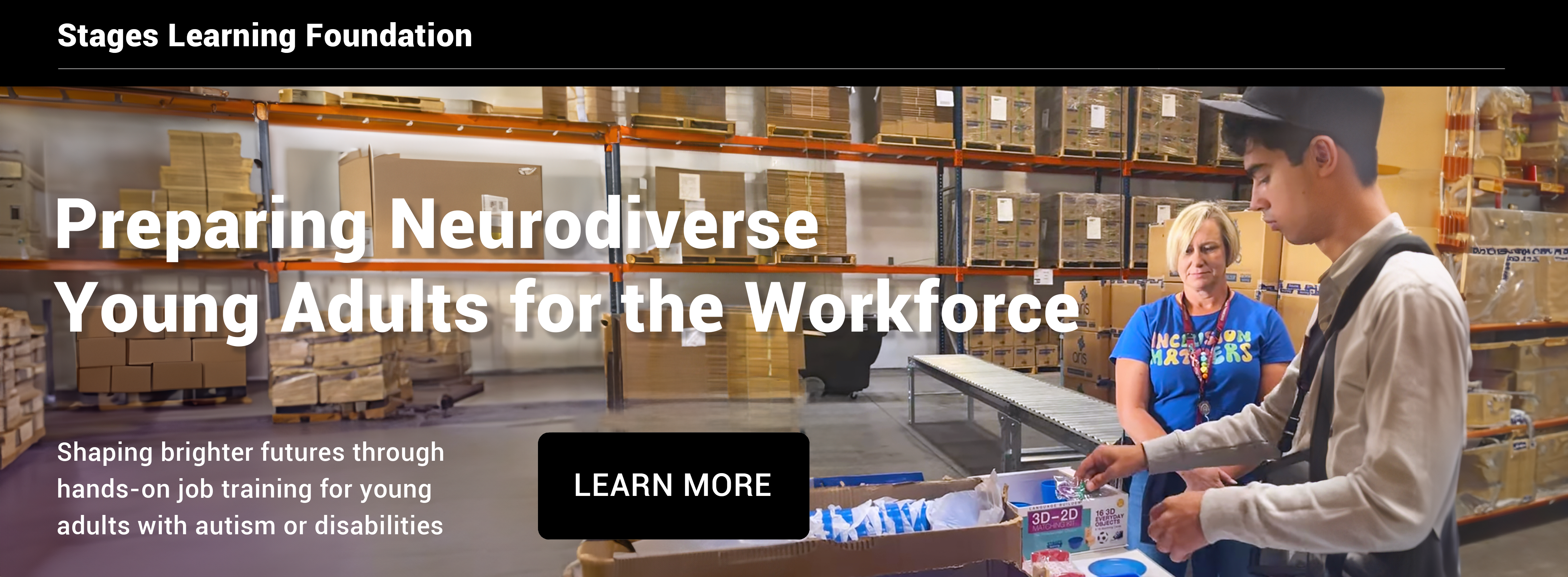Autism and the Transition to Adulthood (Part 1)
Helping Young People With Autism Build a Career and Develop Independent Living Skills
(This article is part 1 of a 2-part series. Check out part 2 on building social skills and maintaining relationships!)
As young adults on the autism spectrum transition to adulthood, they may benefit from additional support in the areas of building and maintaining a career–as well as developing independent living skills. Emphasizing career-building and independent living skills encourages young people on the spectrum to:
- Network and connect successfully with others
- Develop improved cooperation, group participation, and compromising skills
- Communicate clearly, consistently, and effectively during work and leisure activities throughout the day
- Manage their time wisely
- Manage money, prepare food, and establish a reliable form of transportation
- Develop improved self-esteem by becoming more independent and self-sufficient
- Set short and long-term goals for themselves
- Move outside of their comfort zone1

Establishing Goals for Long-Term Success
Small steps towards independence can be attained by creating “SMART” goals:
- Specific
- Measurable
- Achievable
- Realistic
- Time-oriented
SMART goals support the transition to adulthood and independent living by breaking up long-term goals into smaller, more manageable steps that can be taken over time to attain larger, life-long goals. Several strategies that support the achievement of SMART goals–in addition to career-building and independent living skills–include:
-
Individualized transition plans (ITPs):
ITPs are developed “based on informal and formal assessments [which are used] to identify the desired and expected outcomes [for] students and their families once they leave school.”2 Such plans are created “collaboratively with the student, caregivers, vocational educators, vocational rehabilitation counselors, and current IEP team” to support the areas of desired outcomes for young people in the context of independent living, finding and maintaining a career, and achieving a successful transition to adulthood.2 ITPs must be sufficiently thorough, and they typically include planning for independent living needs, postsecondary education, employment, relationships with others, financial and legal needs, transportation options, and medical support.2 In this way, creating individualized transition plans supports SMART goals and encourages the shift to adulthood by guiding young adults in making small steps towards their future goals for independence. -
Person-centered planning (PCP):
PCP is an approach to planning for long-term independent living as a young person on the autism spectrum transitions to adulthood. Person-centered planning includes a focus on “selecting and organizing the services and supports that an older adult or person with a disability may need to live in the community.”3 Person-centered planning often improves the motivation of young people with autism by encouraging them to reach their unique goals and providing personalized services that support their long-term plans, dreams, and aspirations throughout adulthood. -
Working with families:
Working collaboratively with families of young people on the autism spectrum is another essential component in encouraging a successful transition to adulthood and independent living. Support providers should develop appropriate transition plans for the individual(s) they work with in a manner that is consistent with the family values, goals, and aspirations of all involved. Collaboration and consistency are key components to the success of any plan. -
Cultural considerations:
It is important to consider the cultural preferences of both young adults on the autism spectrum as well as their families. By working directly with families and young people on the spectrum, support providers have a unique opportunity to encourage the attainment of the dreams, goals, and aspirations of each individual they work with (within the context of personal belief systems and cultural practices).4 Providers should, therefore, be sufficiently informed of any cultural preferences and beliefs of those they work with and be attuned to learning more about the cultural preferences of the families with which they work. -
Career planning and exploring educational pathways:
Providing opportunities for pre-vocational training and work-based learning are two additional considerations during the career planning process. Because individuals on the autism spectrum often thrive in employment roles that require repetition, clear direction, sufficient attention to detail, and accuracy, job opportunities with these requirements may be a good fit.4 Vocational skills should be focused on throughout the educational years–preferably beginning during high school when possible–and it is also helpful to create customized plans for employment that fit within the context of the goals, strengths, and aspirations of the individual being served. -
Setting goals to achieve life skills:
Life skills are often defined as “the adaptive and positive behaviors necessary for an individual to deal with the demands of life; they include decision-making, problem-solving, goal setting, communication, self-awareness, assertiveness, interpersonal skills, and the ability to cope with stress.”4 Setting life goals plays an important role in achieving independence for those on the autism spectrum. -
Behavioral support and self-determination are two factors that provide excellent groundwork and a solid foundation from which to build the skills necessary for independent living. As a young person with autism transitions to adulthood, self-determination provides an opportunity to determine when and where extra support is needed. The ARC’s self-determination scale, for example, is a self-report that measures–and provides pertinent information about–the various aspects of self-determination in one’s life. The four primary subscales of the assessment include: “(1) student autonomy, (2) student self-regulation,... (3) psychological empowerment, and (4) self-realization.”4 Behavioral support–along with an assessment of the factors of self-determination–can be provided through applied behavior analysis (ABA) services. Self-determination and behavioral support:
Self-determination and behavioral support: -
Transportation and community-based supports:
Transportation and community-based support are two more areas to prioritize as young people with autism transition to adulthood and independent living. Transportation may include driving oneself, walking, biking, using public transportation services (such as a bus or train), or having a designated support person provide rides to and from various activities, appointments, and/or work-related commitments. Community-based supports are present when the individual receives services in the real world that support their long-term goals. Some families may wish to hire a post-secondary coach who can work with and encourage their young adult on the autism spectrum as the transition to independent living and adulthood occurs. -
Leisure, hobbies, and recreation:
Lastly, recreation, leisure, and hobbies must be considered in order to provide individuals with an appropriate way to unwind, relax, and spend their free time. This area should be addressed closely with the young adult(s) receiving support to ensure that activities engaged in during free time are enjoyable. Importantly, goals and interests should be initiated and established by the person receiving services.
Strategies for Supporting Individuals With Autism and Their Families
Several specific systems, approaches, and practices that families supporting a young adult on the autism spectrum may wish to consider as the transition to adulthood continues include:
-
A collaborative family partnership model:
This type of collaborative approach seeks to work synergistically with young adults on the autism spectrum and their families to support the long-term goals established for independent living and the transition to adulthood. Intervention should begin at the earliest age possible (e.g., shortly after an initial diagnosis is received) to prepare for the eventual transition to adulthood.
-
Parent and peer-mediated interventions:
Parent and peer-mediated support strategies can result in increased gains and skill acquisition for those on the autism spectrum. Such interventions focus on establishing parents and peers as role models in the natural environments (i.e., classrooms, homes, leisure areas, etc.) of those with autism.4 -
Recognizing the importance of inclusion:
Inclusion is essential and should be emphasized when considering each of the different contexts in which young adults with autism will be spending their time each day. By collaborating with each person involved in a young person’s support team, inclusion can be adequately and sufficiently prioritized.
Although there are many ways to support young adults on the autism spectrum, working directly with each individual to set, establish, and achieve their personal goals for independence can be actively encouraged as the young person takes necessary steps towards their long-term aspirations for adulthood. Adhering to well-planned and individualized goals for success–while actively collaborating with providers (such as educators, teachers, therapists, and/or caregivers who are knowledgeable of the common characteristics of autism)–can aid in assisting each young adult as they transition into their own career and reach their goals for independent living.

What strategies have you used–and found effective–for supporting young people on the autism spectrum throughout their transition to adulthood?
For more on careers download our free: 10 Best Careers for Young Adults with Autism
References
- https://journeyhomeyoungadult.com/blog/learning-job-skills-helps-young-adults-become-more-independent/
- Wehman, Paul, and Staci Carr. “Individualized Transition Plan (ITP).” Encyclopedia of Autism Spectrum Disorders, 2013, 1580–81. https://doi.org/10.1007/978-1-4419-1698-3_1798.
- https://acl.gov/programs/consumer-control/person-centered-planning
- Hall, Laura J. 2018. Autism Spectrum Disorders: From Theory to Practice. 3rd ed. NY, NY: Pearson.

Kenna McEvoy
Kenna has a background working with children on the autism spectrum and enjoys supporting, encouraging, and motivating others to reach their full potential. She holds a bachelor's degree with graduate-level coursework in applied behavior analysis and autism spectrum disorders. During her experience as a direct therapist for children on the autism spectrum, she developed a passion for advocating for the health and well-being of those she serves in the areas of behavior change, parenting, education, and medical/mental health.





